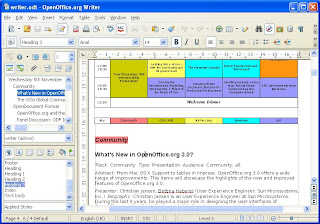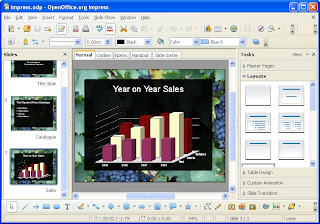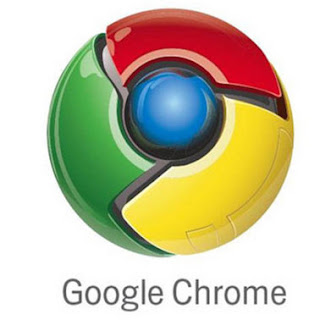With using iTunes you can easily buy more than 8 million songs for 99¢ each. Furthermore you can rent movies from $2.99. or buy from $9.99. And also you can find More than 1,000 TV shows, 100,000 free podcasts, More than 35,000 titles iPod Click Wheel Games for $4.99 each Free lectures from top institutions , lots of applications, gift cards, certificates, and more.
Apple is one of the special electronic company which behaves like building next centuries’ technology. With Improving in electronical, graphical and musical instruments and also fashion design of new age products Apple gets its own place at the top of the technology mountain.
Apple’s last great success is The iPhone which makes mobile phone industry try to work and develop new products as quick as possible. So the phone industry gets new position not to lower their sales.

The genesis of the iPhone began with Apple
CEO Steve Jobs' direction that Apple engineers investigate touchscreens. Apple created the device during a secretive and unprecedented collaboration with
AT&T Mobility—Cingular Wireless at the time of the phone's inception—at a development cost of US$150 million by one estimate. During development, the iPhone was codenamed "Purple 2". The company rejected an early "design by committee" built with
Motorola in favor of engineering a custom
operating system and
interface and building custom
hardware.
The iPhone went on sale in the United States on June 29, 2007. Apple closed its stores at 2:00 pm local time to prepare for the 6:00 pm iPhone launch, while hundreds of customers lined up at stores nationwide.
[2] Apple sold 270,000 iPhones in the first 30 hours on launch weekend.
[78] The original iPhone was subsequently made available in five other countries:
Ireland, the UK, France, Germany, and
Austria.
Apple has begun quietly demonstrating an internally developed iPhone GPS Navigator program that includes turn-by-turn, 3d views etc. Visually, it is very similar to Tom-Tom, but with the expected Apple eye candy. They were sketchy about the details, but it seem that this will not be part of the core software (I.E. they intend to charge for it). It was also unclear whether they were using cellular-based data to share traffic information, but some of the screens seemed to indicate that it would.
http://www.slideshare.net/iphone3glover/new-apple-iphone-3g-new-3g-apple-iphonehttp://www.slideshare.net/gankyun/how-you-can-manage-your-life-through-iphone-and-mac-in-generalhttp://www.slideshare.net/christmasgiftguru/cheap-iphone
Specifications:
Size comparison, from top to bottom, between:-a
first generation iPod nano-a first generation iPhone-a
fourth generation iPod*****
Features common to both versions
Screen size: 3.5 in (89 mm)
Screen resolution: 480×320 pixels at 163
ppi, with 3:2
aspect ratioInput devices:
Multi-touch screen interface plus a "Home" button
Built-in rechargeable, non-removable battery
2
megapixel cameraLocation finding by detection of cell towers and Wi-Fi networks
Samsung S5L8900 (412 MHz
[5] ARM 1176 processor,
PowerVR MBX 3D graphics co-processor)
Memory: 128
MB DRAM[8]Storage: 8 GB or 16 GB
flash memoryOperating System: iPhone OS
Quad band GSM /
GPRS /
EDGE:
GSM 850 / 900 / 1800 / 1900Wi-Fi (
802.11b/g)
Bluetooth 2.0 with EDR
******
Original model
4 GB model (discontinued after two months) or 8 GB model
Size: 4.5 inches (115 mm) (h) × 2.4 inches (61 mm) (w) × 0.46 inch (11.6 mm) (d)
Weight: 135 g (4.8 oz)
Battery has up to 8 hours of talk, 6 hours of Internet use, 7 hours of video playback, and up to 24 hours of audio playback, lasting over 250 hours on standby.
Headphone jack (recessed)
Digital
SAR of 0.974
W/kg*****
3G model
Color: Black (8 GB or 16 GB) or white (16 GB)
Size: 4.5 inches (115.5 mm) (h) × 2.4 inches (62.1 mm) (w) × 0.48 inch (12.3 mm) (d)
Weight: 133 g (4.7 oz)
Headphone jack (non-recessed)
Battery has up to 10 hours of 2G talk, 5 hours of 3G talk, 5 (3G) or 6 (Wi-Fi) hours of Internet use, 7 hours of video playback, and up to 24 hours of audio playback, lasting over 300 hours on standby.
Tri band UMTS /
HSDPA:
UMTS 850 / 1900 / 2100Assisted GPS, with preference to location based on Wi-Fi or cell towers
Digital
SAR Rating: 1.38
W/kg
Patents, copyrights, and trademarks:
Apple has filed more than 300
patents related to the technology behind the iPhone.
LG Electronics claimed the iPhone's design was copied from the
LG Prada. Woo-Young Kwak, head of LG Mobile Handset R&D Center, said at a press conference, “We consider that Apple copied Prada phone after the design was unveiled when it was presented in the iF Design Award and won the prize in September 2006.”
On September 3, 1993,
Infogear filed for the U.S.
trademark "I PHONE" and on March 20, 1996 applied for the trademark "IPhone". "I Phone" was registered in March 1998, and "IPhone" was registered in 1999. Since then, the I PHONE mark had been abandoned. Infogear's trademarks cover "communications terminals comprising computer hardware and software providing integrated telephone, data communications and personal computer functions" (1993 filing), and "computer hardware and software for providing integrated telephone communication with computerized global information networks" (1996 filing). Infogear released a telephone with an integrated
web browser under the name
iPhone in 1998. In 2000, Infogear won an infringement claim against the owners of the iphones.com domain name.In June 2000,
Cisco Systems acquired Infogear, including the iPhone trademark. On December 18, 2006 they released a range of re-branded
Voice over IP (VoIP) sets under the name iPhone.
In October 2002, Apple applied for the "iPhone" trademark in the United Kingdom, Australia,
Singapore, and the
European Union. A Canadian application followed in October 2004 and a
New Zealand application in September 2006. As of October 2006 only the Singapore and Australian applications had been granted. In September 2006, a company called Ocean Telecom Services applied for an "iPhone" trademark in the United States, United Kingdom and
Hong Kong, following a filing in
Trinidad and Tobago. As the Ocean Telecom trademark applications use exactly the same wording as Apple's New Zealand application, it is assumed that Ocean Telecom is applying on behalf of Apple. The Canadian application was opposed in August 2005 by a Canadian company called
Comwave who themselves applied for the trademark three months later. Comwave have been selling VoIP devices called iPhone since 2004.
Shortly after Steve Jobs' January 9, 2007 announcement that Apple would be selling a product called iPhone in June 2007, Cisco issued a statement that it had been negotiating trademark licensing with Apple and expected Apple to agree to the final documents that had been submitted the night before. On January 10, 2007 Cisco announced it had filed a lawsuit against Apple over the infringement of the trademark iPhone, seeking an injunction in federal court to prohibit Apple from using the name. More recently, Cisco claimed that the trademark lawsuit was a "minor skirmish" that was not about money, but about interoperability.
On February 2, 2007, Apple and Cisco announced that they had agreed to temporarily suspend litigation while they hold settlement talks, and subsequently announced on February 20, 2007 that they had reached an agreement. Both companies will be allowed to use the "iPhone" name in exchange for "exploring interoperability" between their security, consumer, and business communications products.

















